Reggio Emilia City Museums
The art collections, the historical sites and the exhibition centres of Reggio Emilia City Museums have, for a long time, helped to develop the cultural identity of Reggio Emilia’s people. Natural, archaeological, artistic and historical finds from the entire Province and from the five continents, are exposed and promoted in the network of the Reggio Emilia City Museums. The collections date from the Palaeolithic period to the present day and are presented in five different Museums, two monumental sites and three exhibition centres.
The first nucleus of this heritage of buildings and works dates back to just over two hundred years ago, and has been built up more and more during the decades, with continuous updates.
The first nucleus of this heritage of buildings and works dates back to just over two hundred years ago, and has been built up more and more during the decades, with continuous updates.
-
Read more
The oldest part of the collections dates back to 1799, when the private collection of scientist Lazzaro Spallanzani was purchased by the Municipality of Reggio Emilia. He had collected zoological, palaeontological, mineral, lithological and botanic finds, as well as furnishing accessories such as paintings, small tables and ornaments, in his private residence in Scandiano. The collection has retained all its eighteenth-century glory and since 1830 has been housed in Palazzo San Francesco.
In 1862, the “Gabinetto di Storia Patria” was set up thanks to the work of priest Gaetano Chierici, one of the fathers of modern Palaeoethnology in 1870 it was extended to become the “Museo di Storia Patria” (Museum of Homeland History). It is a precious record of late 19th century science and museology. The display compares local prehistoric and proto historic materials of the province of Reggio Emilia alongside other finds of the same period but coming from different areas, mostly in Italy. The collection was subsequently renamed “Museo Gaetano Chierici di Paletnologia” and is housed in Palazzo dei Musei.
The Palazzo is also linked to the Galleria dei Marmi (Marble Gallery), displaying stone finds, Roman epigraphs and sculptures from the Medieval period to the 18th century, while the Mosaic Atrium hosts a collection of Roman mosaics and stone floor decorations dating back to the 12th and 13th centuries. There are also different rooms with displays of naturalistic, zoological, and botanic finds as well as ethnographic, numismatic, ceramic, jewellery and minor art collections.
In 1902, the “Antonio Fontanesi Gallery” was set up; it traces the history of art in Reggio Emilia from the 14th to the 20th century and has been reorganized, extended and enhanced several times.
At present, the historical Palace of the City Museums is part of a network including several locations: five Museums –Palazzo San Francesco, the Parmeggiani Art Gallery, the Tricolour Flag Museum, the Museum of Psychiatry and the Museum of the Beata Vergine della Ghiara Sanctuary. The network even includes two monumental sites (Synagogue and Mauriziano), three exhibition centres (Spazio Gerra, Cloister of San Domenico Exhibition Centre, Arts Workshop), and Arts Library.
Over time, the City Museums have continued in their aim to preserve the historical heritage of the city and the Province of Reggio Emilia and, at the same time, have promoted scientific research, knowledge and public use of the museum network, also through educational and training activities. They have been dynamic promoters of cultural and training activities related to their heritage in cooperation with several public and private institutions in the area: Superintendences, Universities, Public Authorities, Research Institutes and Cultural Institutions.


